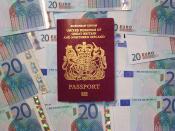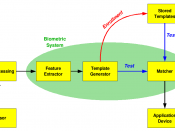Students were asked to complete an interactive simulation from the class resource page called "Selecting and Testing Hypotheses." This survey asked students to make critical decisions, using various statistical tests, which would assist a nationally recognized bank in rolling out new methods and procedures to combat identity theft. Selecting the test markets and sample size, producing a questionnaire, analyzing data, approving a method of biometric identification, and selecting a launch strategy were all key components of the simulation.
The launch strategy chosen for this biometric system was for a national roll out. Research supported the claim that 65 percent of the bank's customers favor a biometric system to help guard against identity theft. An overwhelming number of retailers, 75 percent of them, support the system as well. Only 35 percent of the personal banking customers were opposed to the new technology. While only 25 percent of the retailers reacted negatively.
Considering the costs, as well as the risks the decision to go national was made based on the results derived from the survey and the test markets. A phased launch, with minimal risk, was not considered after statistical data indicated that the vast majority of those polled supported the additional protection.
The bank conducted its research in five of the United States' most populous and diverse cities: New York, Los Angeles, Chicago, Dallas, and Minneapolis. These cities provided a diverse sample and the ability to connect with certain demographics. The bank was concerned with five key areas one of which was the speed of biometrics versus signature identification. Retailers not only sell products but also they sell time, the time it takes to execute the biometric test is crucial to shop owners. By selecting a level of significance of 0.10 and performing a t test on...


